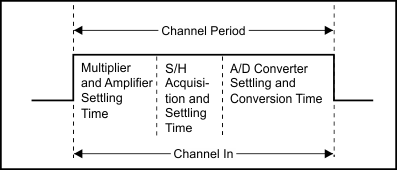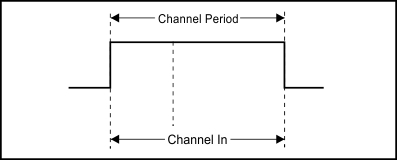SBAA051A January 1994 – April 2015 MSC1210Y2 , MSC1210Y3 , MSC1210Y4 , MSC1210Y5
3 Increasing System Throughput Rate
The throughput rate of the system is determined by the settling times required in the analog multiplexer and input amplifier, sample/hold acquisition time and A/D converter settling and conversion time.
Two programming modes that are commonly used in data acquisition systems are normal serial programming (Figure 6) and overlap mode programming (Figure 7). The range of typical system throughput rates for these types of modes are shown in Table 2 for the Burr-Brown SDM857KG modular data acquisition systems.
A wide range of throughput speeds can be achieved by “short cycling” the A/D converter to lower resolutions and by overlap programming the data acquisition system.
The multiplexer and amplifier settling time is eliminated by selecting the next sample (channel n + 1) while the held sample (channel n) is being converted. This requires a sample/hold with very low feed-through error.
 Figure 6. System Throughput Rate-Signal Programming
Figure 6. System Throughput Rate-Signal Programming  Figure 7. System Throughput Rate-Overlap Mode.
Figure 7. System Throughput Rate-Overlap Mode. Table 2. System Throughput Rates and RSS Accuracy for Normal and Overlap Mode Programming for Burr-Brown Model SDM857KG Modular Data Acquisition System
| Resolution | Normal Programming | Overlap Mode | ||
|---|---|---|---|---|
| Max System Throughput Rate (kHz) | RSS Accuracy | Max System Throughput Rate (kHz) | RSS Accuracy | |
| 12 Bits | 18 | 0.025% | 27 | 0.025% |
| 10 Bits | 19.5 | 0.08% | 30 | 0.08% |
| 8 Bits | 21.1 | 0.30% | 34.1 | 0.30% |